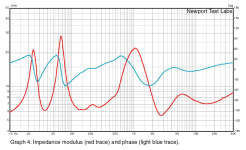Randy Myers
Well-known member
- Thread Author
- #1
I have a new pair of Harbeth arriving today. My McIntosh amplifier has 2, 4, and 8 ohm speaker connections. The Harbeth are 6 ohm. Which tap should I use 4 or 8? I know the normal answer is to try both and see which I like better. I have always used the 8 ohm connection on this amp, but I am asking opinions. Would the 4 or 8 connector be better, and why would you think so.
Thank you
Thank you

